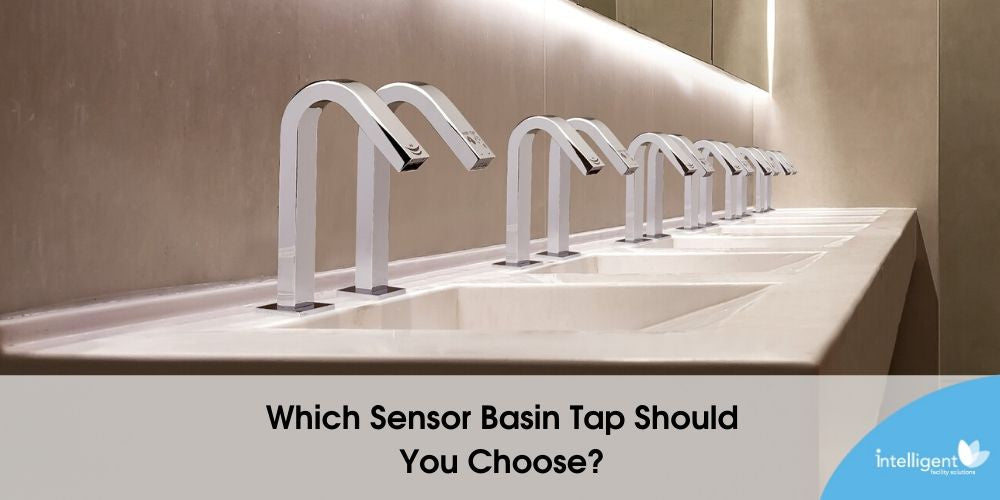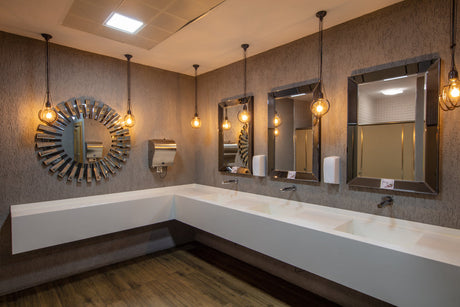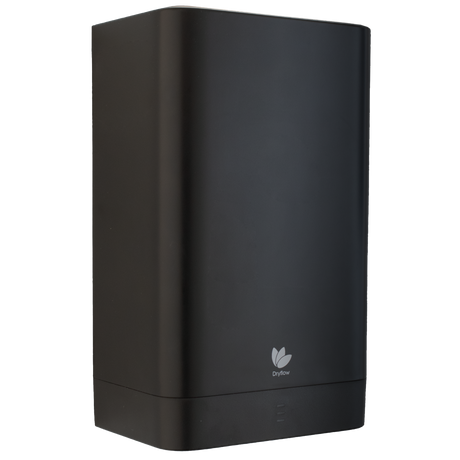
Like any product, the “best sensor tap” will be dependent upon your needs and specific location. There are a number of factors which you may want to consider before making a decision. This post will help you think about what you require and which is the best based on this.
Examples of the best sensor taps for 2020 include:
- Prestige IFS8155D Sensor Tap – BATTERY Operated
- Prestige MIXER Sensor Tap – BATTERY Operated
- AQUAZONE SMOOTH Concealed Sensor Tap – BATTERY or MAINS Supplied
- AQUAZONE AQUAECO Mono MIXER Sensor Tap – BATTERY or MAINS Supplied
- Franke AQUA131 Protronic-S Sensor Tap – BATTERY Operated
- Franke F5EM1003 F5E-mix Electronic Pillar MIXER – MAINS Supplied
- Giampieri Mains-Operated Sensor Tap for Basin – MAINS Supplied
- Giampieri Wall-Mounted Tap with Sensor and MIXER – BATTERY Operated
Quick reminder: Why choose a sensor tap?
There are many advantages to choosing a sensor tap for your washroom sinks. There’s the fact that your building will save a lot of water. Manual taps, on average, have a flow rate of 10 litres per minute. A small office of just 7 people could save 12378.60 litres of water a year installing automatic taps, the equivalent of 155 full baths! Although there’s a vast amount of water on earth, and this never changes in volume, there is only a certain amount of usable water available at a certain point in time. It all depends where in the water cycle it is. Climate change, population growth and leaks and losses of water at source are also making saving water a priority. The key point is the demand for water is outweighing the ability to supply at the rates it’s being demanded and this is only going to get worse if things don’t change.
Businesses can save money on their water bills. Most non-household customers are charged based on the amount of water they receive through a meter. A small number of non-household customers do not have a meter and are charged based on the rateable value of their property.
From a hygienic point of view sensor taps aren’t touched, so the potential to cross contaminate is reduced. They’re also simple to manage by all kinds of users, including children and those with painful hands (arthritis), dexterity limitations and other mobility restrictions. Document M expects faucets to be “easily operated”.
Another benefit of sensor taps is that some come compete with an automatic flush. The European standard EN 806-5 requires that those sections of plumbing that are used infrequently should be flushed at regular intervals. All public and commercial buildings are affected, in particular schools and council buildings during the school holidays, campsites out of season, unoccupied hospital rooms, etc.
Sensor tap specific considerations
If there isn’t a mixer valve on the actual tap you will need to add a mixer valve (thermostatic or manual) at the water source before it gets to the tap. If there’s no mixer on tap, only one temperature can be set. This of course also has its advantages for energy use and safety. Keeping the temperature constant means you can standardise the amount of electricity required to heat the water. You can also prevent people scalding themselves by pre-setting the temperature.
Some products come with only battery packs, some only with mains and some with both. So, you need to think about which would be the best power source for your location, although some can be converted after install if you change your mind. Another choice is deck or wall mounted. If you have the space to install deck mounted options or have to have these because your basin is pre-cut with tap holes then you may go with these. If you don’t have much space, a wall mounted option could be a great choice.
When looking at the features that come with a sensor tap, be sure to check if these are standard or have to be changed with a remote control which may be needed for some settings. Usually you only need 1 remote no matter how many taps you install.
WRAS Approval
The Water Supply (Water Fittings) Regulations or Scottish Byelaws require that a water fitting should not cause waste, misuse, undue consumption or contamination of the water supply and must be ‘of an appropriate quality and standard. Although it is not a compulsory regulation, a product demonstrates this by being WRAS approved. Read more about WRAS approved taps here.
The differences in sensor taps
Taking into account all the above considerations, here we show you the differences between a range of sensor basin taps so that you can match them up to your requirements
Prestige Fittings
- Entry Level
- Flow rate (at 3 bar): 7lpm
- Mounting: wall and deck mounted options
- Type of water mixing: Premixed and mixer on tap options available
- Power source: Majority of these are battery powered as standard, but a step-down transformer can be purchased which means they can be hard wired – the transformer and battery pack are easily swapped.
- Guarantee: 1 year
- WRAS approved: No
- Automatic flush: No
- Additional features
- Can be used with any standard basin
- 60 seconds protective shut off
AQUAZONE taps
- Mid-range
- Flow rate (at 3 bar): Range from 3.7lpm to 5.2lpm
- Mounting: wall and deck mounted options
- Type of water mixing: Premixed and mixer on tap options available
- Power source: All include both power adapter and battery component as standard
- Guarantee: 2 years
- WRAS approved: Yes
- Automatic flush: No
FRANKE taps
- AQUA, F3 and F5 range
- Flow rate (at 3 bar): Range from 4.8lpm to 6lpm
- Mounting: Deck mounted options
- Type of water mixing: Premixed and mixer on tap options available (Mixer levers on some taps can be easily customised to not allow certain temperatures)
- Power source: Battery or power adapter options
- Guarantee: 2 years
- WRAS approved: Yes
- Automatic flush: Yes
- Additional features:
- 60 seconds protective shut off
- Adjustable sensor
- Remote control available to change settings such as flow rate, sensor distance and locate system data
Giampieri taps
- High Grade
- Flow rate (at 3 bar): Range from 5lpm to 6lpm but can changed to 4lpm or 1.89lpm on demand with another aerator.
- Mounting: wall and deck mounted options
- Type of water mixing: Premixed and mixer on tap options available
- Power source: Battery or power adapter options
- Guarantee: 2 years (electronic parts included)
- WRAS approved: No
- Automatic flush: 24 hour hygiene flush via remote control (where compatible as some of the range do not have this option)
- Additional features:
- Long lasting solenoid valve (around 1 million cycles)
- 90 seconds protective shut off (can be changed)
- Optional remote control to adjust detection range, security time, delay time after hand removed, temporary off function
- Special aerator in some which allows you to adjust the water stream direction on site in order to prevent water splashing if needed
- Made from the highest quality chrome-plated yellow brass (Cu Zn38 Pb2). Yellow brass (BRASS38) has very low corrosion. It is used in the junction and cover. Very little quantity of lead (quite a lot below maximal)
Tap combinations
Other things to consider include soap, water and hand dryer combination products
The water facet included in the Dryflow Bi-Tap series is a water and soap combination unit, comes with battery or power adapter supplied as standard and has a flow rate of 5.7lpm
The water facet included in the Dryflow Tri-Tap series is WRAS approved, comes with battery or power adapter supplied as standard and has a flow rate of 5.7lpm
To view our full sensor tap range please click here





